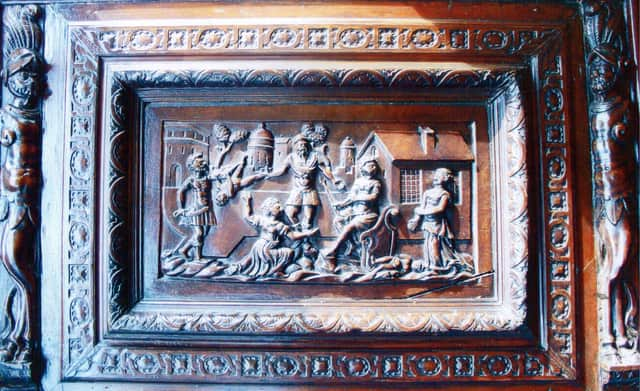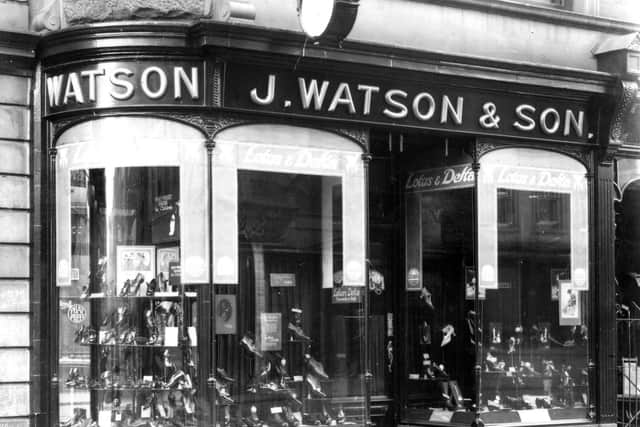Looking back with Ian Scott on Judgement of Solomon carving that's been in Falkirk for more than 400 years


The large 16th century religious wooden carving which has graced the town for at least 400 years moved to a new home in Dunfermline where it will now be cared for by a member of the Watson family, the owners of the carving.
Although we don’t know exactly when it was produced or by whom, the experts suggest that it was probably carved in oak sometime in the 1500s in Germany finding its way eventually to the Falkirk town house of the Livingston family of Westquarter, cousins of the more famous family of Callendar House. This building called “the Great Ludging” stood where Waterstones is today. By the late 19th century this was the business premises of John Watson, shoe and boot makers, who made their final move in 1900 to the red sandstone building we know today. There the carving remained until the Watson business closed down.
Advertisement
Hide AdAdvertisement
Hide AdThe subject depicted by the carver is the biblical ‘Judgement of Solomon’ in which the famously wise king judged the claim of two women to the same baby by offering to chop the baby in half! The real mother was revealed when the false one agreed to the division. It was a popular religious theme at the time and no doubt cost a pretty penny to make and ship to Scotland in difficult times. The relief carving is very large – some five feet by three, and five inches thick – and was in place as an overmantel above a fireplace. The centaur figures originally stood on either side of the fireplace.


In 1746 following the Battle of Falkirk on January 17, Bonnie Prince Charlie passed the night in the Great Ludging, then the home of a Mrs Graham, a well known Jacobite sympathiser. The family had owned the building since 1722 and Mrs Graham’s son Walter was a doctor with the Jacobite Army. No doubt the Bonnie Prince would have been shown and have admired the art work which became quite famous as a result of the stories that circulated after the battle. The Duke of Cumberland leading the redcoat army in pursuit of the Prince also spent the night in the room with the carving. The following century, in 1805, a shoemaker called John Johnston acquired the building. He was known as Radical Jack and was put on trial after the Battle of Bonnymuir in 1820 but acquitted much to the delight of the Falkirk bairns. Around 1846 the business was sold to the Watson family who remained in possession until the middle of last century. John Watson rejected many offers from collectors who wanted to acquire the carving and the family remained very proud of their connection to this part of Scotland’s history.
The late Judy Watson known to many in Falkirk area had the carving removed from the Waterstones’ building before it was sold and since then it has rested in her home in Larbert. I had many discussions with her about what should happen to it. Her strong inclination was that it should stay in the family while I made the case for it to remain in the town. Callendar House, Trinity Church and even the Steeple were considered but in the end the family proposal won the day and hence the move to Dunfermline where it now rests.